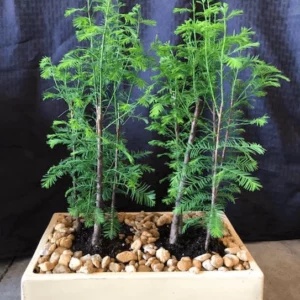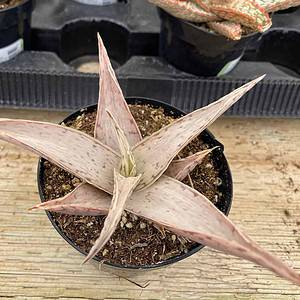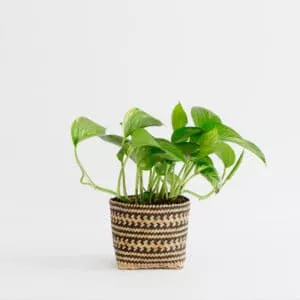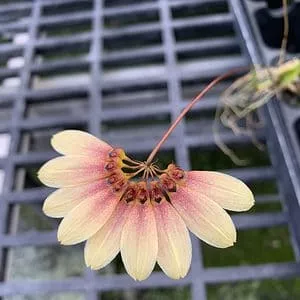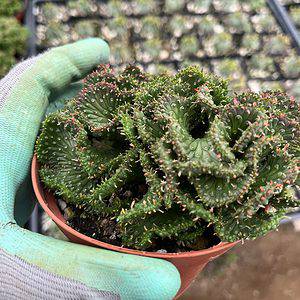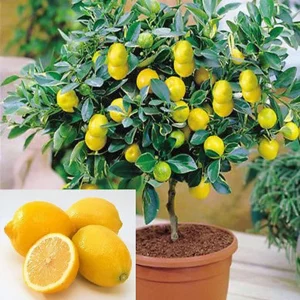No products in the cart.
Table of Contents
A tropical forest is a magical place where you can find different types of plants. Yet, one of these beautiful species is the rabbit’s foot fern. Today we are referring to the Davallia fern with its quirky trait of growing creeping rhizomes covered with fine furry hairs.
Hence, the name hare’ foot fern.
More About Rabbit’s Foot Fern
The rabbit’s foot fern has a fancy botanical name Davallia solida var. fejeensis. Previously scientists referred to it as the Davallia fejeensis. Still, while many gardeners call it rabbit’s foot, some call it the deer’s foot fern, Shinobu fern, hare’s foot fern, or the ball fern.
The fern species is native to the Tropical Fiji Islands living on forest floors in shady, damp conditions. Yet, when grown in most parts of America, it grows as deciduous or evergreen, but it depends on the region you live in.
For the most part, plant parents grow it as a houseplant, and like most other plants in the fern species, it produces clusters of fronds. Yet, these fronds are epiphytic, so they do not get their nutrients from the soil, and the fronds attach to rock crevices or trees.
The fuzzy rhizomes grow at the base of the plant and can reach up to two feet tall and three feet wide. You might see the fronds with three to four pinnate forms covered on the underside with sporangia that release spores.
Still, indoor plants need humans to help create new plants. The fascinating thing is when you have them growing as hanging plants, the surface rhizomes creep and spread as they grow. Another interesting thing is that these plants are perennial and always return in a favorable environment.
Still, an important note, as most other plants, the rabbit foot fern does not respond well to scented candles or tobacco smoke.
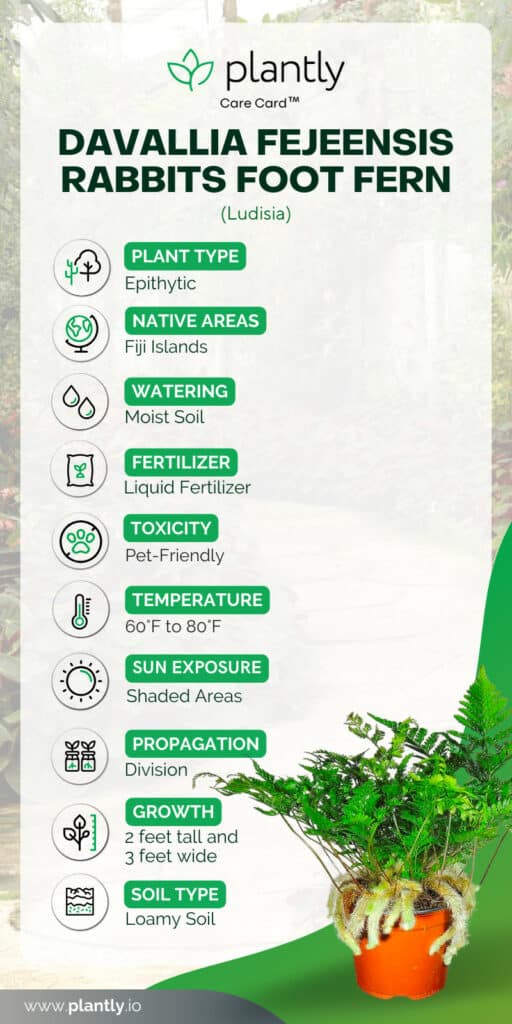
Rabbit’s Foot Fern Care
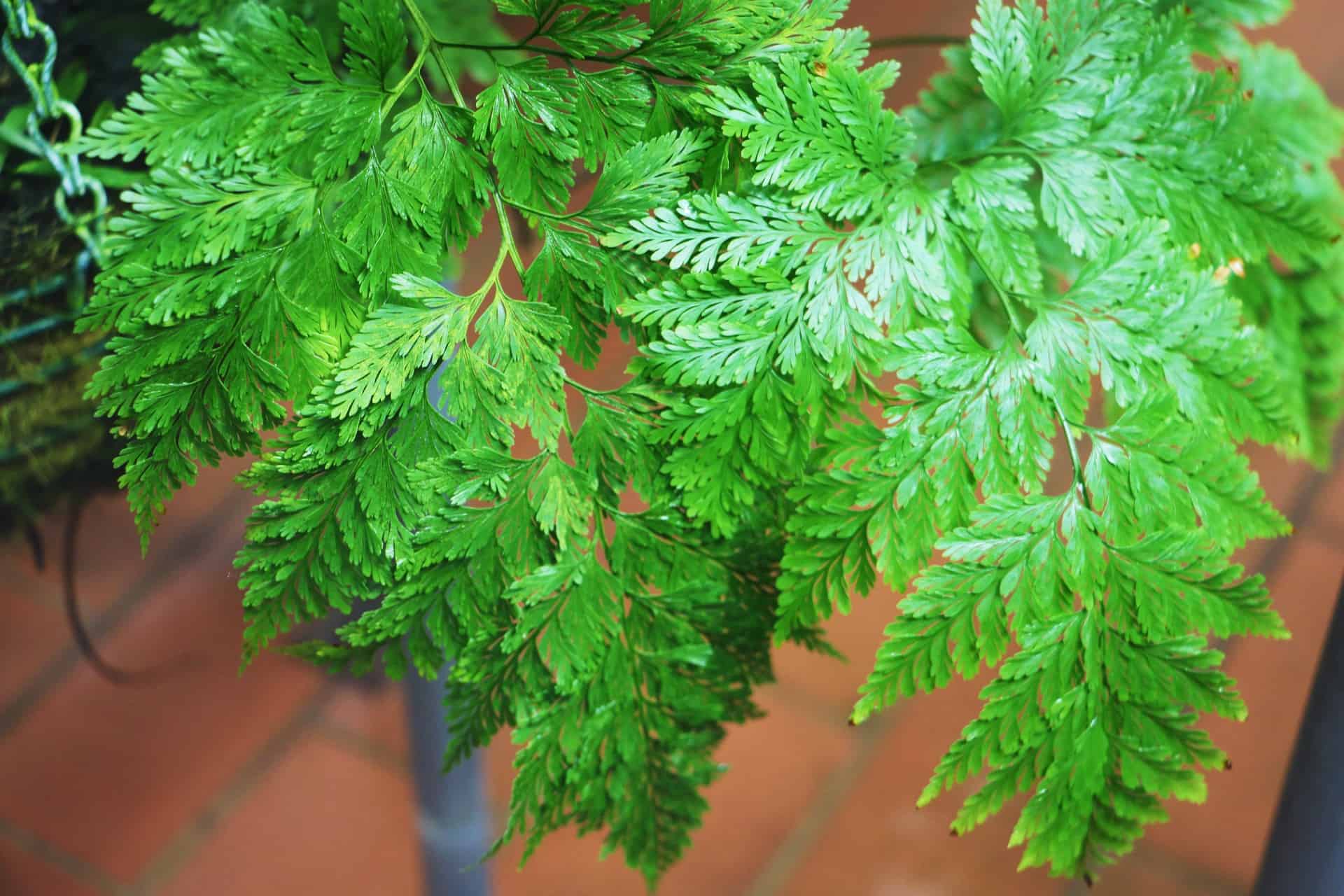
While the rabbit’s foot fern grows well in the USDA hardy zones ten and eleven, they are never grown in the garden but mostly indoors. Regarding rabbit foot fern care, they prefer being left alone as it does not react well to change.
You may also see the rhizomes extending below the soil, but please do not bury them as they function the same as orchid roots. Instead, you can let the furry rhizomes cascade down a pot to provide a visual note for all to admire.
Alternatively, you can pin the rhizomes outside hanging baskets.
Best Soil For Hare’s Foot Fern
The rabbit’s foot fern prefers shallow pots with loamy yet rich soil filled with peat. A paramount concern with the Davallia fejeensis rabbit’s foot fern is drainage. So, well-draining soil is best as they do not enjoy being waterlogged.
With a peat-based potting mix, your plant will enjoy the acidic pH level present. Your tropical plant loves moist soil but is not soggy as it is prone to root rot.
Suitable Light For Rabbit Foot Fern
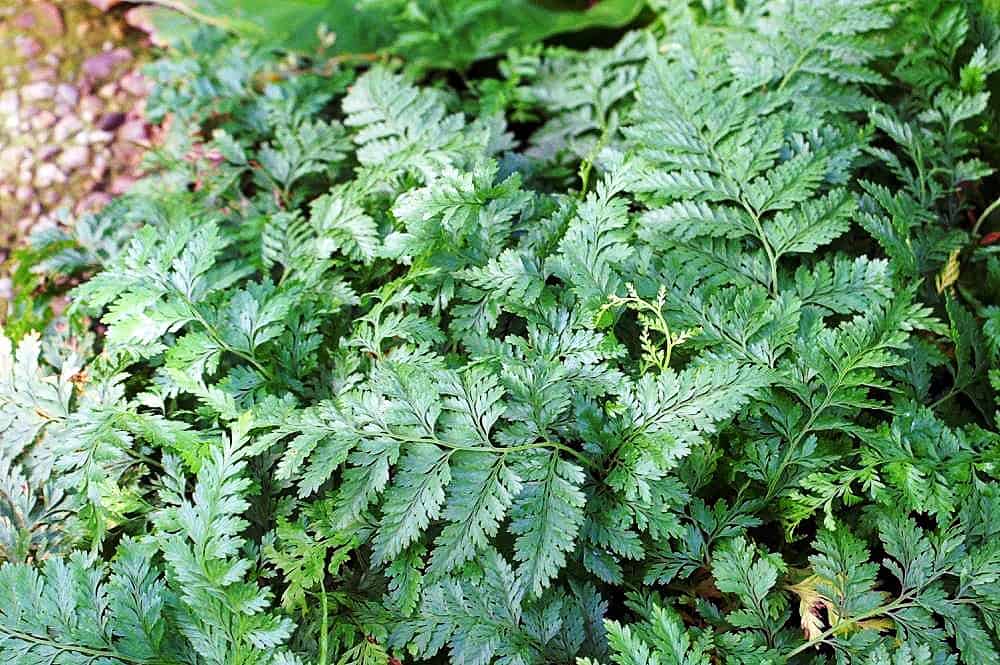
In the forests in Fiji, the rabbit foot fern lives on the forest floor under canopies of trees. Hence, they prefer indirect light to shady conditions. Growing your rabbit’s foot fern indoors helps to place your rabbit foot fern in a north-facing or an east-facing window.
The important thing is not to expose your rabbit foot fern to direct sunlight unless acclimated for the plant’s outdoor garden, as these rabbit foot ferns live in shady areas with dappled light. If you do not have a perfect spot to let those lacy fronds grow healthy, you can always place them under grow lights.
The best is to avoid direct sunlight as it can lead to brown tips on the leaves and provide them indirect light instead.
Watering Rabbit Foot Fern
The trick with caring for these house plants is always to provide them with moist potting soil. Hence, it means leaving the soil dry before watering well and misting the exposed rhizomes daily.
A daily misting helps to keep the rhizomes moist. Instead, the soil can become a bit drier. Also, refrain from watering and daily misting in the fall and winter, as your plant is semi-dormant.
The main concern with the rabbit’s foot fern is moist potting mix to prevent limp fronds. When you keep the soil moist, your plant will be happy.
Another important note is when you water your Davallia fejeensis with tap water, we recommend leaving it standing for 24 hours. As with many ferns, they are sensitive to the chemicals found in the water.
Fertilizing Rabbit’s Foot Ferns

For keeping your houseplant healthy, as mentioned, it needs a potting medium that drains well. When you keep the soil moist, these species remain happy indoors.
But for added growth, you can feed your rabbit’s foot fern a half-strength liquid fertilizer every two to three weeks in the growing season.
Then, as fall arrives with winter months, you can reduce the houseplants’ feeding until spring and summer.
Temperature and Humidity
Most of the family Davalliaceae grows best in temperatures above 60°F. These are less demanding plants regarding humidity as they do not need high humidity compared to other ferns.
It is essential to provide them with moisture while still using a pebble tray or humidifier. It helps to give these houseplants water to prevent the rhizomes from drying out.
If you have your Davallia fejeensis rabbit’s foot fern outside on the patio and notice temperatures drop, we recommend bringing your plant indoors.
-
Free Shipping$209.24Sold By: BONSAI WORLD LLC
In stock
Bald Cypress Forest Planting. Shaded bonsai trees
Sold By: BONSAI WORLD LLC -
$35.99Sold By: Succulent Oasis
$47.99In stock
Medium Succulent Plant – Star Aloe ‘Snow Drift’. A star shaped Hybrid with muted coloring.
Rated 4.84 out of 5 based on 352 customer ratings08Sold By: Succulent Oasis -
$28.00Sold By: NEEPA HUT
In stock
4″ Golden Pothos + Planter Basket
Rated 4.99 out of 5 based on 221 customer ratings11Sold By: NEEPA HUT -
Free Shipping$34.99Sold By: Aloha Hawaii Orchids
$39.99In stock
Bulb. Daisy Chain ( Makoyanum x Cumingii ) 2″
Rated 4.65 out of 5 based on 268 customer ratings00Sold By: Aloha Hawaii Orchids
Pruning and Maintaining Rabbit’s Foot
When you grow a rabbit’s foot fern, the rhizomes are pinned into place on the soil surface. This allows the new growth to find its way down into the potting soil. The good news is the rabbit’s foot fern is not repotted frequently.
Provide your houseplant with a shallow pot; it helps to encourage your plant to overgrow the container a bit. It works as a hanging basket plant with the rhizomes cascaded over the sides. During growth, you can remove the dead leaves as you need not prune regularly.
When not repotted, you can provide your houseplants with fresh soil.
Rabbit’s Foot Fern (Davallia fejeensis) is a unique and attractive houseplant known for its furry rhizomes that resemble a rabbit’s foot. This fern can be created through several methods, including division, spore propagation, and cutting the rhizomes.
Materials You’ll Need:
Mature Rabbit’s Foot Fern plant
Clean, sharp scissors or pruning shears
Small pots or containers
Well-draining potting mix
Plastic bags or clear plastic wrap (optional)
Watering can or spray bottle
Transparent plastic or glass container (for a mini greenhouse, optional)
Steps for Propagating Rabbit’s Foot Fern with Rhizome Cuttings:
Choose a mature Rabbit’s Foot Fern with healthy rhizomes as the parent plant for propagation.
Get a small pot or containers ready. Ensure they have drainage holes to prevent waterlogging.
Look for mature rhizomes with healthy roots on the parent plant. Use a clean, sharp knife or pruning shears to cut a section of the rhizome from your Davallia fejeensis.
Each cutting should be around 2-4 inches long and have roots to a frond attached.
Fill the small pots with a potting mix that drains well.
Plant the rhizome cuttings into the potting mix, burying them just deep enough to cover the roots. Keep the leaves above the soil surface.
Water the newly planted cuttings thoroughly, but avoid overwatering. Aim to keep the soil consistently moist but not soggy. So water when the soil dries the top few inches of the surface.
The Rabbit’s Foot Fern appreciates high humidity during propagation. You can create a mini greenhouse effect by placing a clear plastic bag or plastic wrap over the pots to trap moisture. Alternatively, you can set the pots in a transparent plastic or glass container.
Place the pots in a location with bright, indirect light. Avoid too much bright light, as it can scorch the delicate leaves.
Check the soil moisture regularly and water as needed to maintain even moisture levels. Keep an eye on the cuttings for signs of new growth. New leaves should emerge in a few weeks to a few months.
Once the new Rabbit’s Foot Fern plants have grown sufficiently and developed their root systems, you can transplant them into larger pots with a standard potting medium suitable for ferns. Ensure to prepare each cutting with its own pot.
Remember that propagation can take some time, and not all cuttings may succeed, so it’s a good idea to take multiple cuttings to increase your chances of success.
You can enjoy new Rabbit’s Foot Fern plants from your propagated cuttings with patience and proper care.
Davallia Varieties
In the Davallia genus, you can also find two other types of ferns.
Davallia canariensis
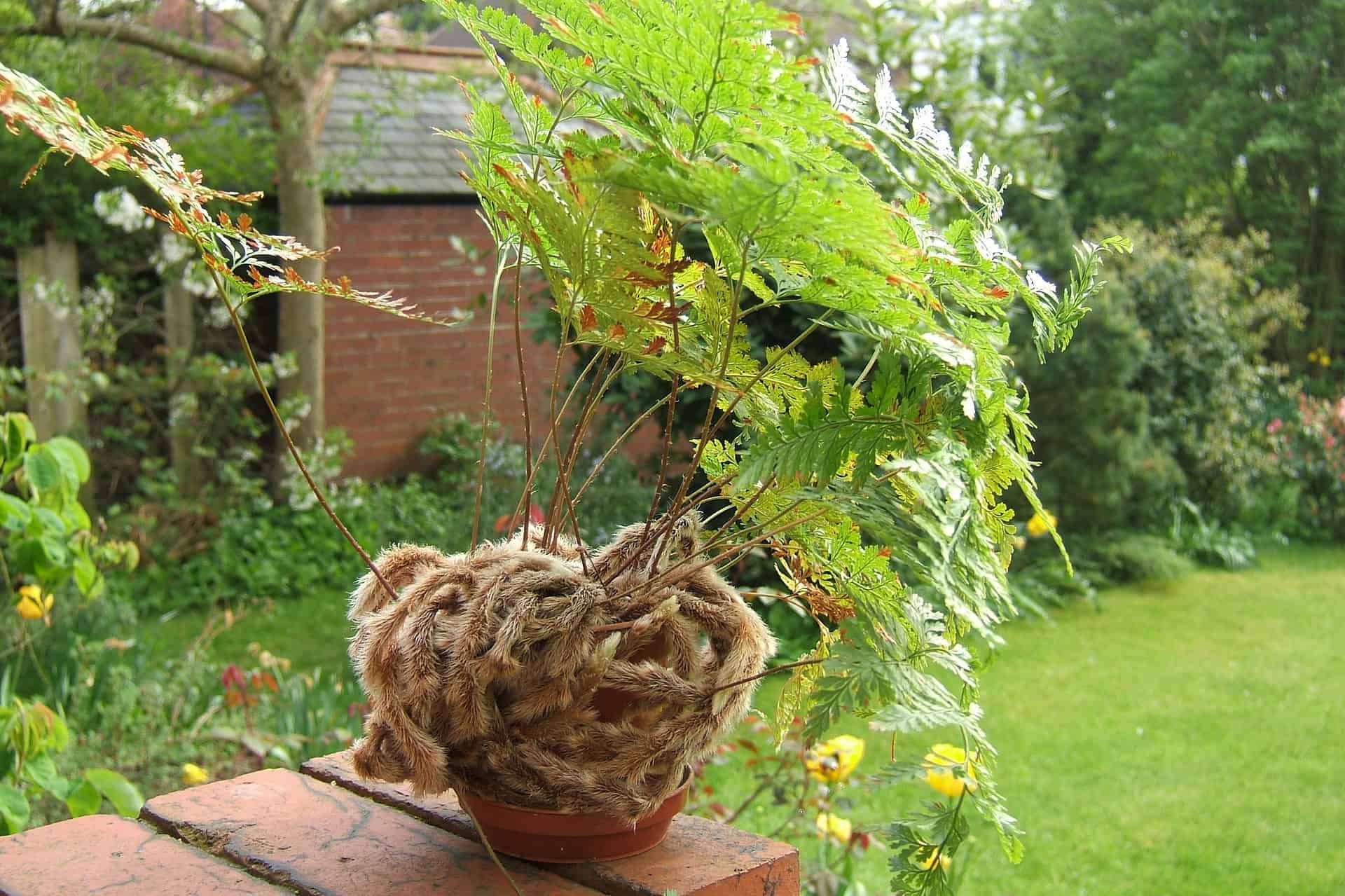
The hare’s foot can grow up to 20 inches tall and 40 inches wide. It also has trailing rhizomes that are larger yet coarser than the rabbit’s foot fern.
Davallia trichomanoides
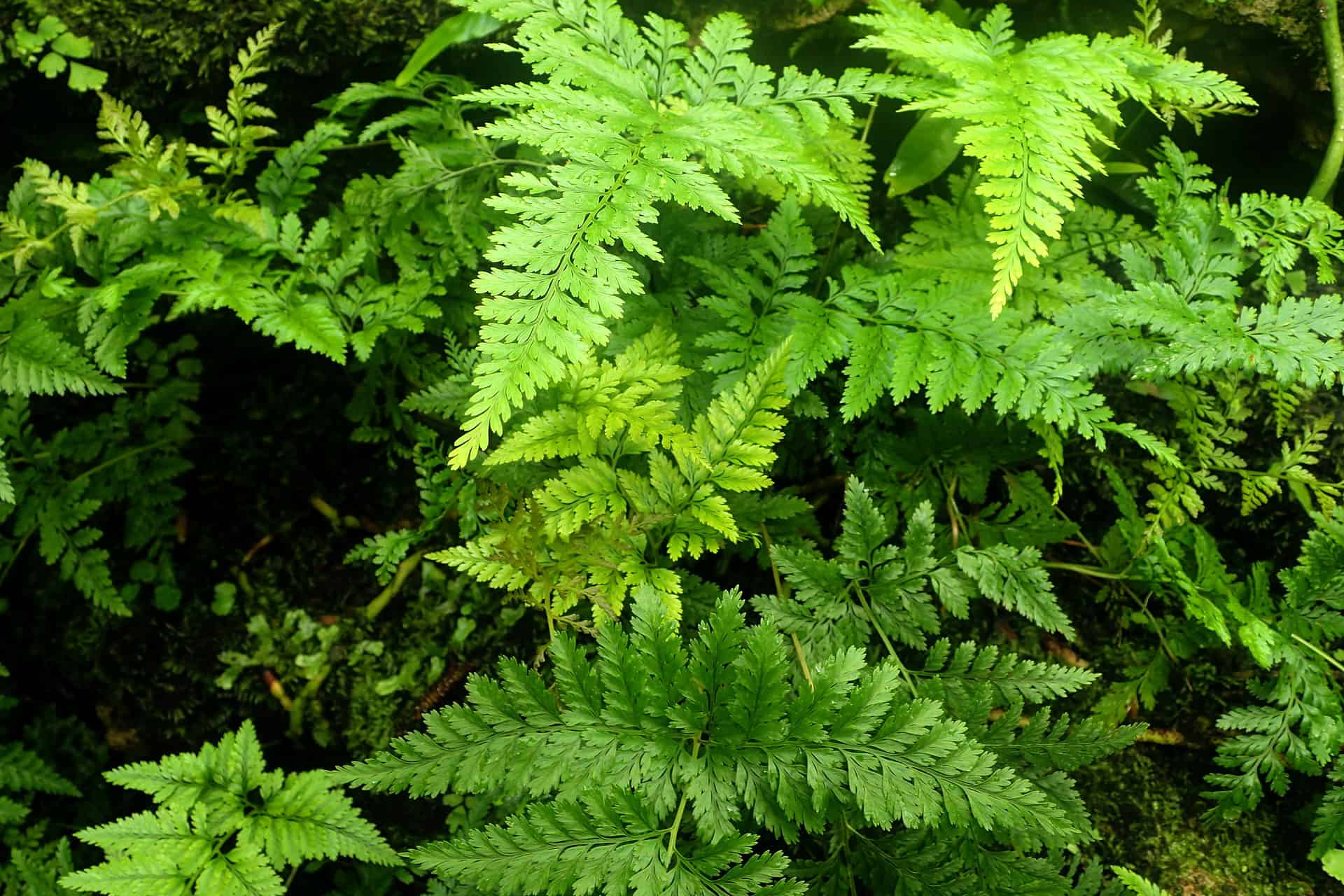
The squirrel’s foot develops shorter fronds with a length of six inches, and the rhizomes are smaller.
Pest and Disease
The rabbit’s fern is susceptible to pests and diseases like most other ferns and houseplants. Some common pests that can bother your rabbit’s foot fern are spider mites, whiteflies, aphids, scales, and mealybugs.
When identifying the infestation early on, it is treatable using neem oil. Another concern is root rot which develops when the rhizomes are covered with soil. Rotting of the root system can also happen when you overwater your plant. Other common problems are mostly damage to the fronds.
The fronds can get damaged from chemicals used in the home or even tobacco smoke to scented candles. Another concern is when your rabbit’s foot fern stands in direct sun, the fronds can scorch and turn brown.
If you notice brown or yellow frond tips, it needs high humidity, while limp fronds mean your plant is getting too much moisture. When you have pale fronds or stunted growth, it helps to give your rabbit’s foot fern some fertilizer.
Frequently Asked Questions
Compared to most houseplants, the rabbit’s foot fern is not poisonous to humans or pets.
The good luck plant, as many people also refer to it, can grow up to 18 inches tall, placed in direct sun with partial shade.
Regarding rabbit foot fern care indoors or outside, it can mean it is not receiving enough moisture. Hence, it is best to keep the soil moist but not soggy.
Pale fronds on a fern could be caused by inadequate lighting, insufficient fertilization, or environmental stress such as temperature fluctuations or pests. Identifying and addressing the underlying cause is essential for the fern’s long-term health.
A variety of factors can cause brown tips on ferns. One common cause is overwatering, which can lead to root rot and damage to the plant’s leaves. Another possible cause is low humidity levels, which can cause the fern’s leaves to dry out and become brittle.
Additionally, exposure to direct sunlight or extreme temperatures can contribute to developing brown leaf tips on ferns. To prevent this issue, monitoring your fern’s watering schedule and ensuring it gets the right amount of light and humidity is essential.
Fungus gnats are small flies that can be found in the soil of plants such as the Davallia fejeensis. They lay their eggs in the moist soil, and their larvae feed on the plant’s roots. This can cause damage to the plant and make it more susceptible to other issues. Preventing or eliminating these pests is essential to keep your plant healthy.
Whether you want to buy, sell, or simply reach out to other plant enthusiasts, Plantly is the right place to be!
-
$14.99Sold By: Cacti and Exotica
In stock
4″ Green Coral cactus
Rated 4.98 out of 5 based on 59 customer ratings00Sold By: Cacti and Exotica -
$7.99 – $9.99Sold By: Succulent Oasis
In stock
Gasteraloe “Little Warty”
Rated 4.84 out of 5 based on 352 customer ratings03Sold By: Succulent Oasis -
Free Shipping$8.29Sold By: CZ Grain
In stock
Dwarf Lemon Tree Seeds
Only 886 available and it’s in 5 people’s basketRated 4.60 out of 5 based on 156 customer ratings00Sold By: CZ Grain -
$12.99Sold By: Succulent Oasis
Only 1 left in stock
Medium Succulent Plant Peperomia Dolabriformis.
Only 1 available and it’s in 1 people’s basketRated 4.84 out of 5 based on 352 customer ratings00Sold By: Succulent Oasis
